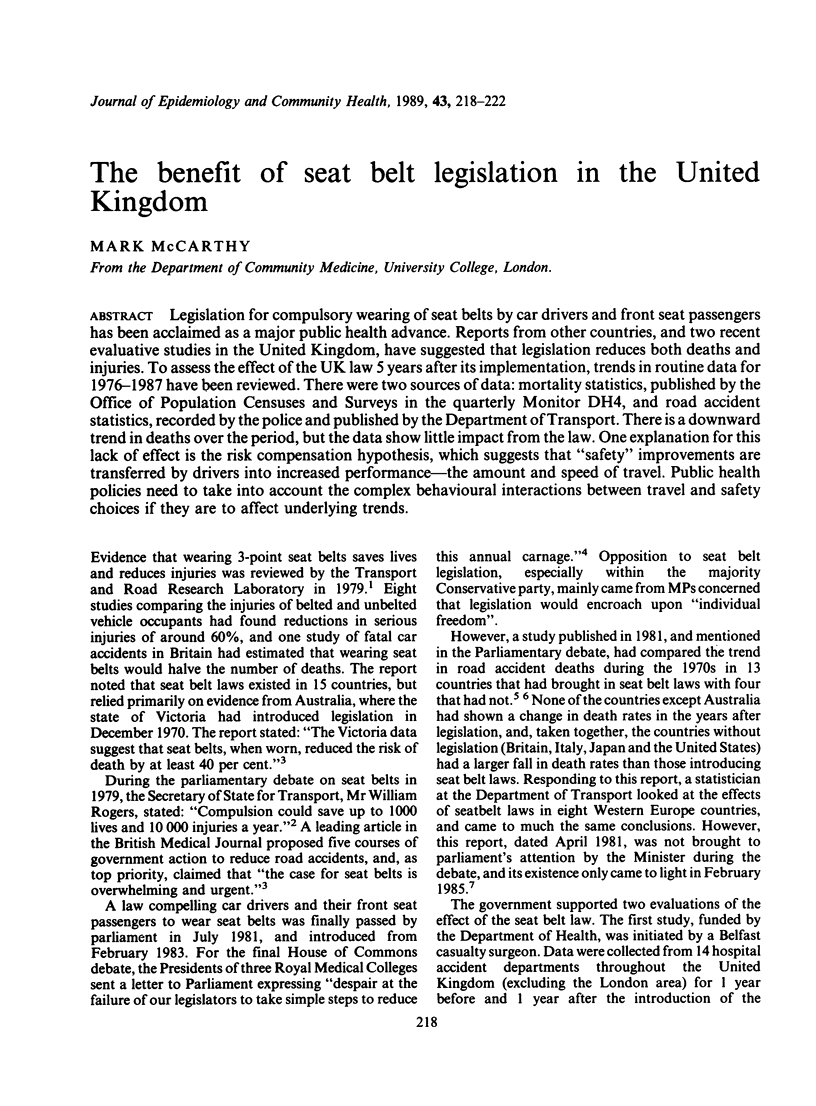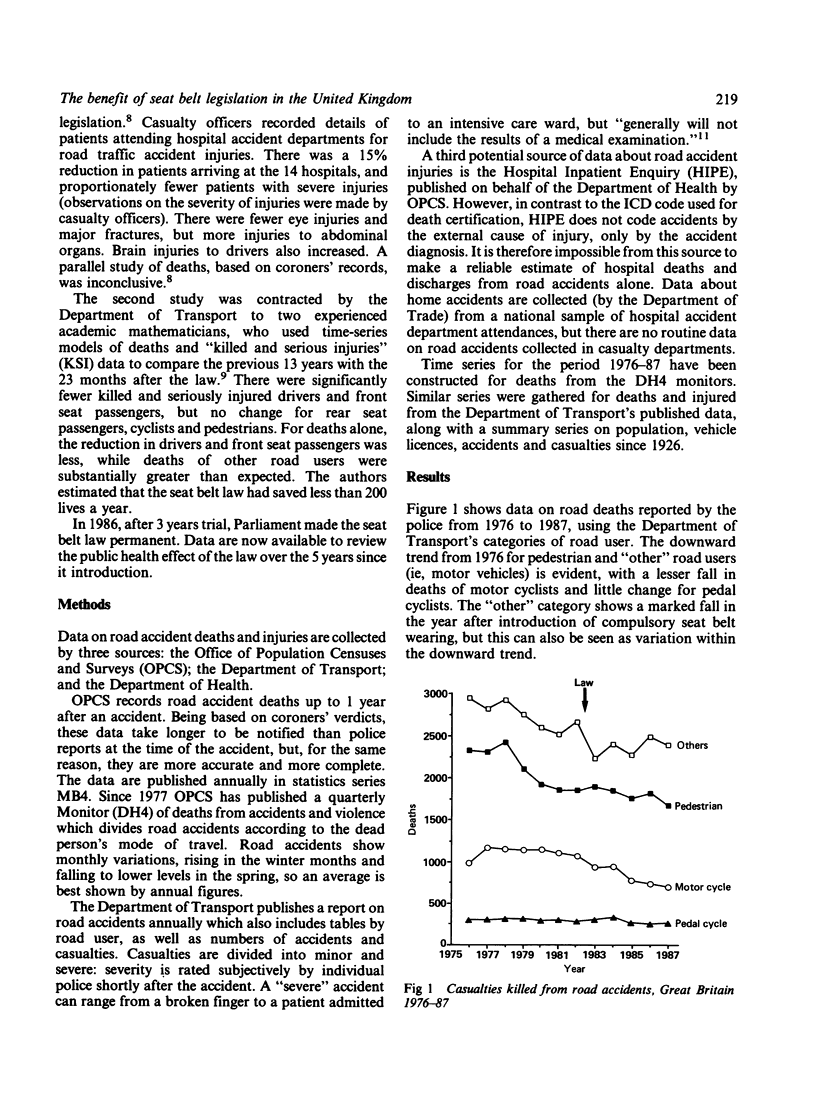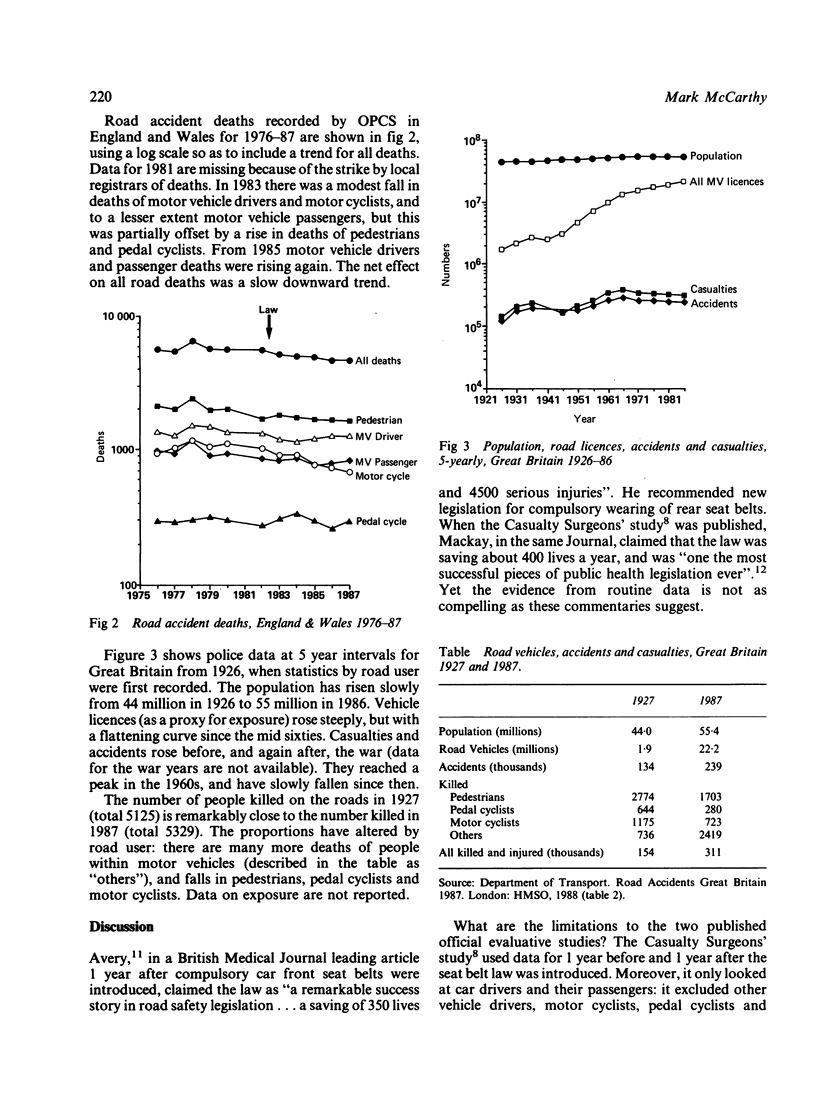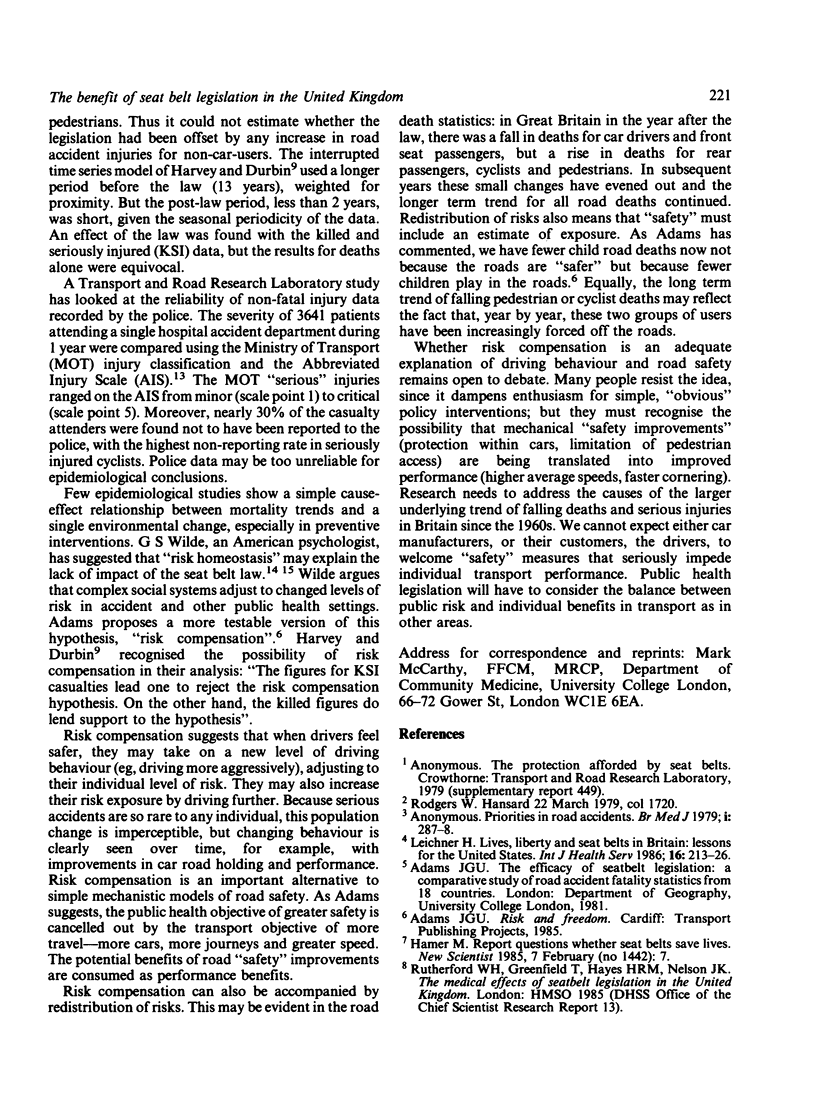Abstract
Legislation for compulsory wearing of seat belts by car drivers and front seat passengers has been acclaimed as a major public health advance. Reports from other countries, and two recent evaluative studies in the United Kingdom, have suggested that legislation reduces both deaths and injuries. To assess the effect of the UK law 5 years after its implementation, trends in routine data for 1976-1987 have been reviewed. There were two sources of data: mortality statistics, published by the Office of Population Censuses and Surveys in the quarterly Monitor DH4, and road accident statistics, recorded by the police and published by the Department of Transport. There is a downward trend in deaths over the period, but the data show little impact from the law. One explanation for this lack of effect is the risk compensation hypothesis, which suggests that "safety" improvements are transferred by drivers into increased performance--the amount and speed of travel. Public health policies need to take into account the complex behavioural interactions between travel and safety choices if they are to affect underlying trends.
Full text
PDF




Selected References
These references are in PubMed. This may not be the complete list of references from this article.
- Avery J. G. Seat belt success: where next? Br Med J (Clin Res Ed) 1984 Mar 3;288(6418):662–663. doi: 10.1136/bmj.288.6418.662. [DOI] [PMC free article] [PubMed] [Google Scholar]
- Leichter H. Lives, liberty, and seat belts in Britain: lessons for the United States. Int J Health Serv. 1986;16(2):213–226. doi: 10.2190/PN93-31UE-N1VF-DK57. [DOI] [PubMed] [Google Scholar]
- Mackay M. Seat belts and risk compensation. Br Med J (Clin Res Ed) 1985 Sep 21;291(6498):757–758. doi: 10.1136/bmj.291.6498.757. [DOI] [PMC free article] [PubMed] [Google Scholar]


